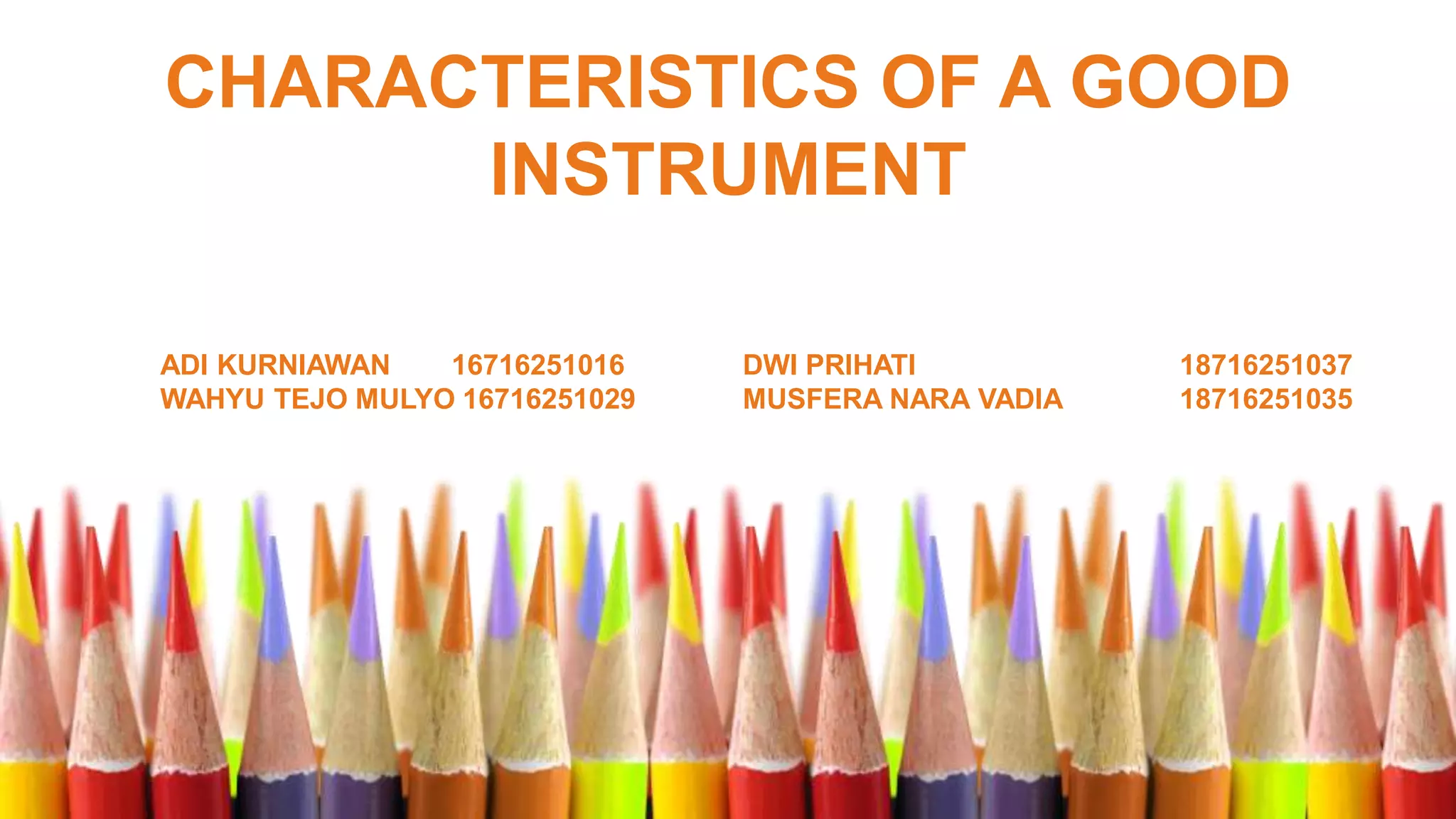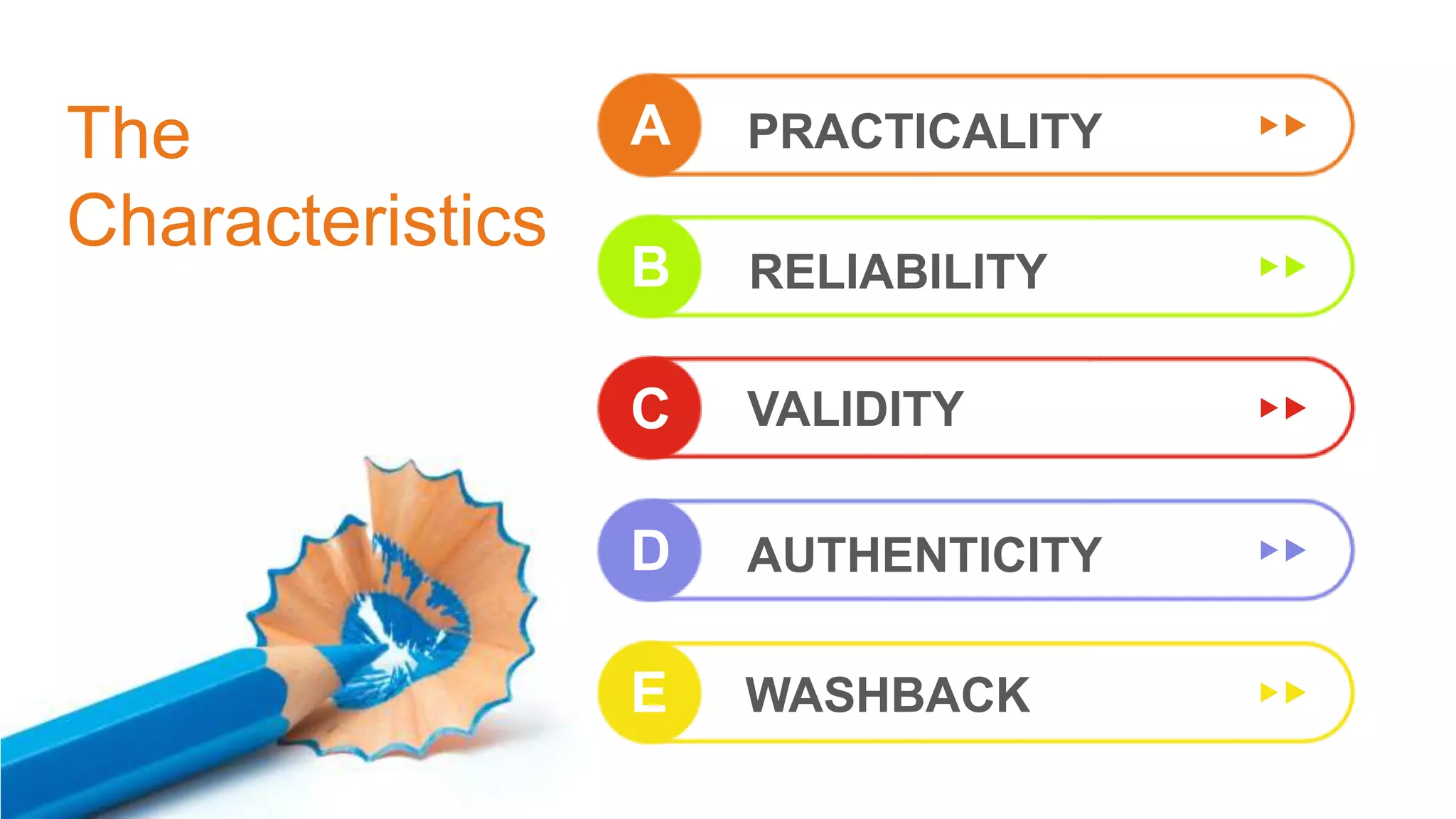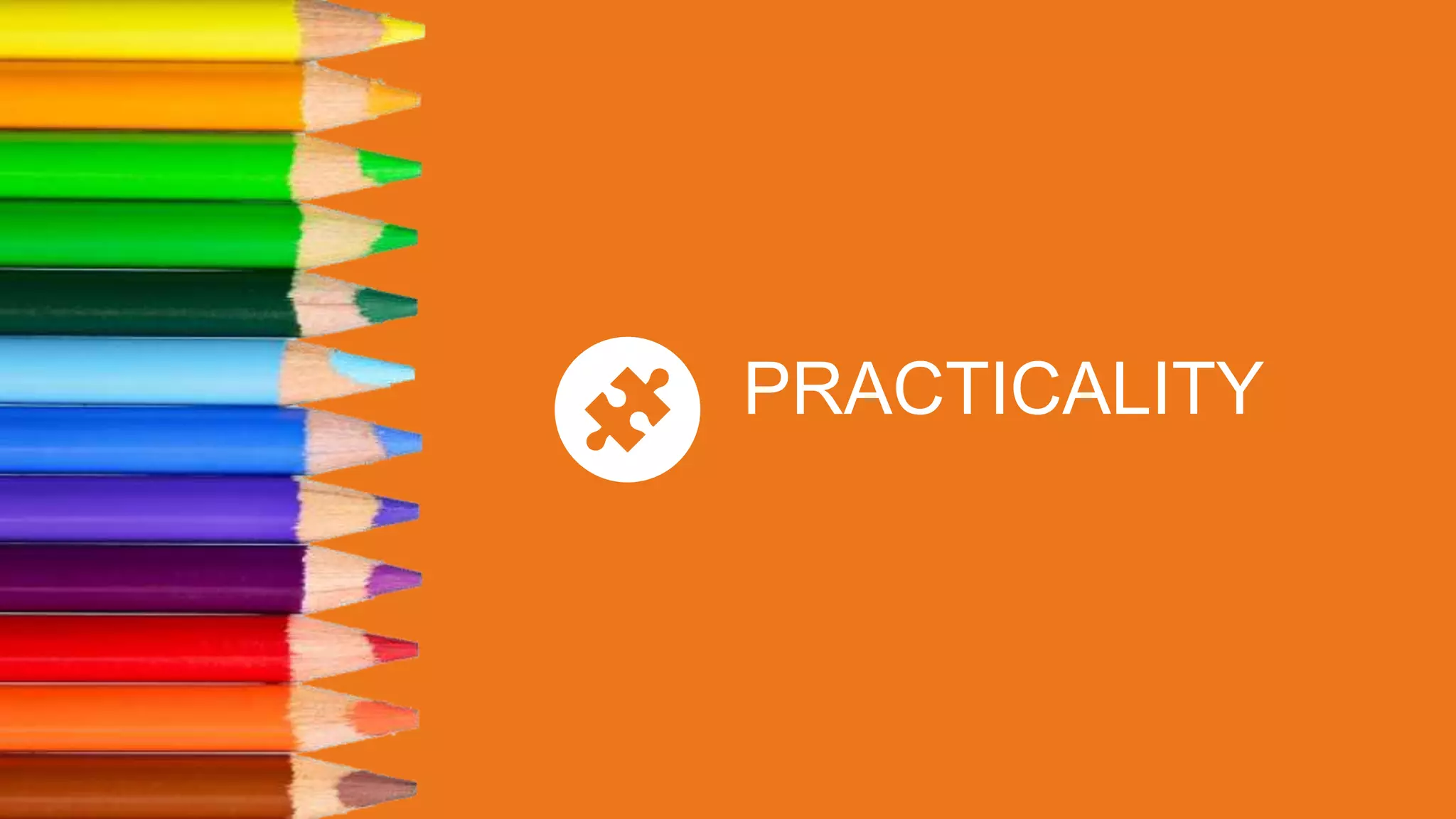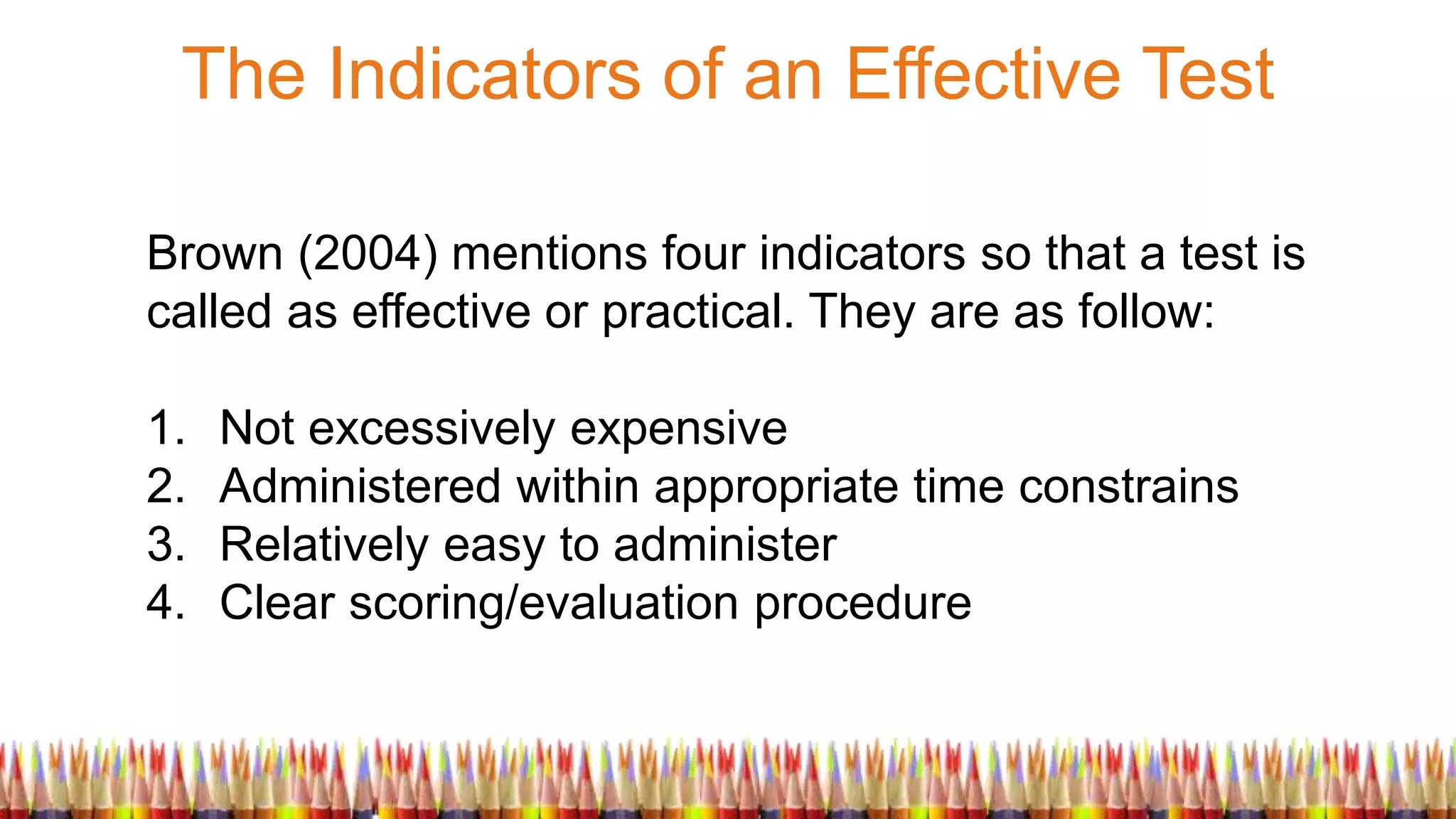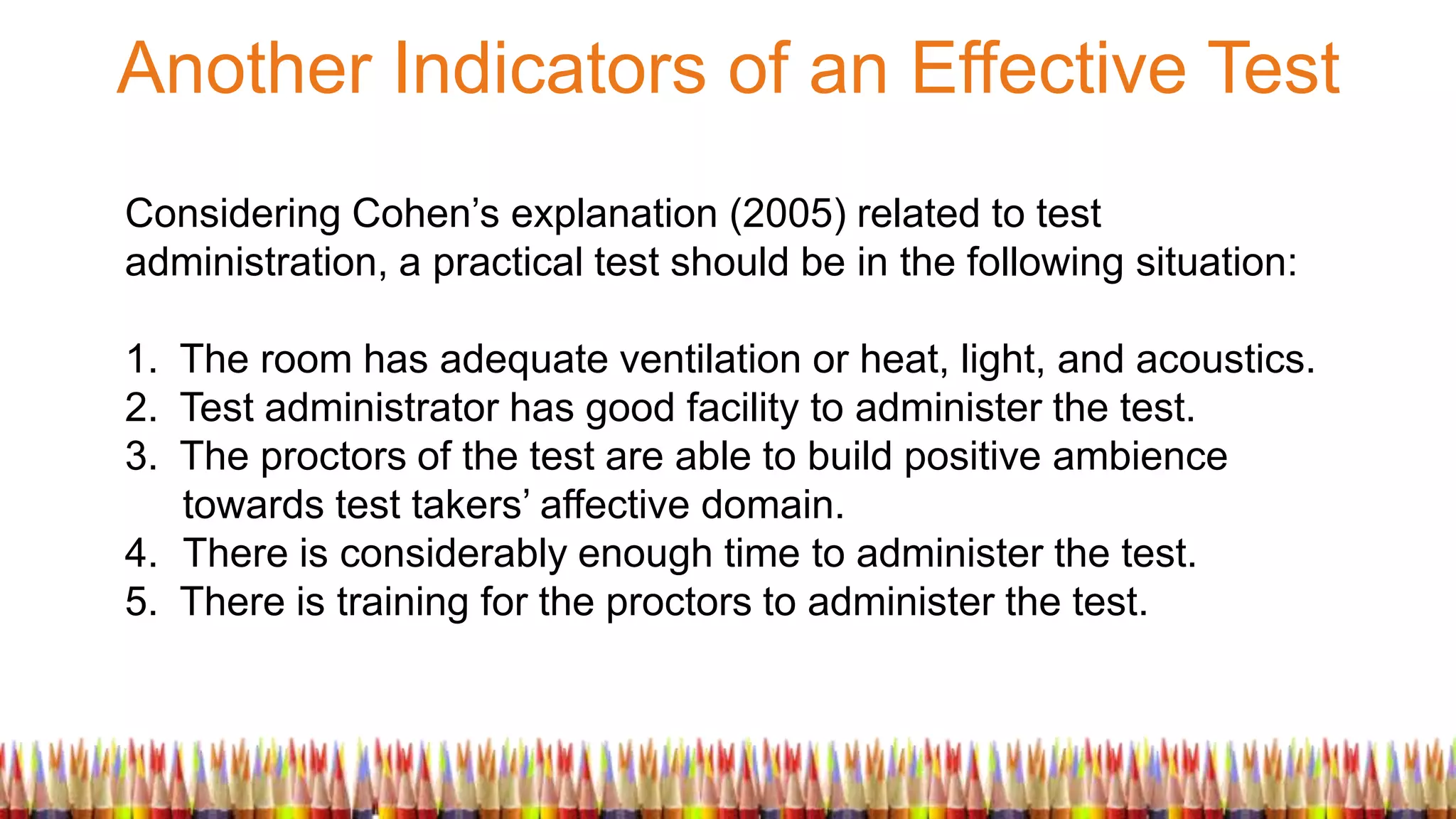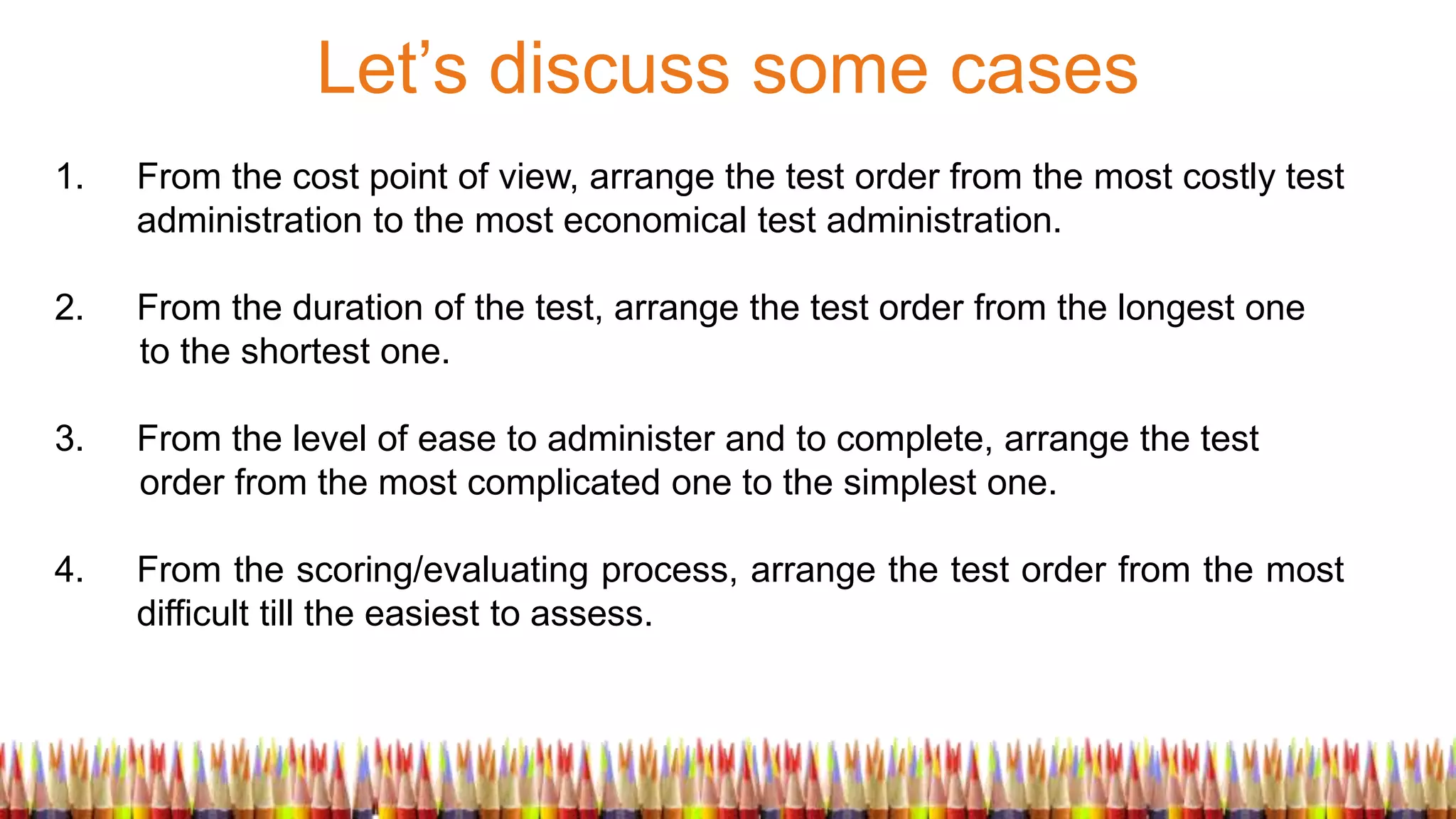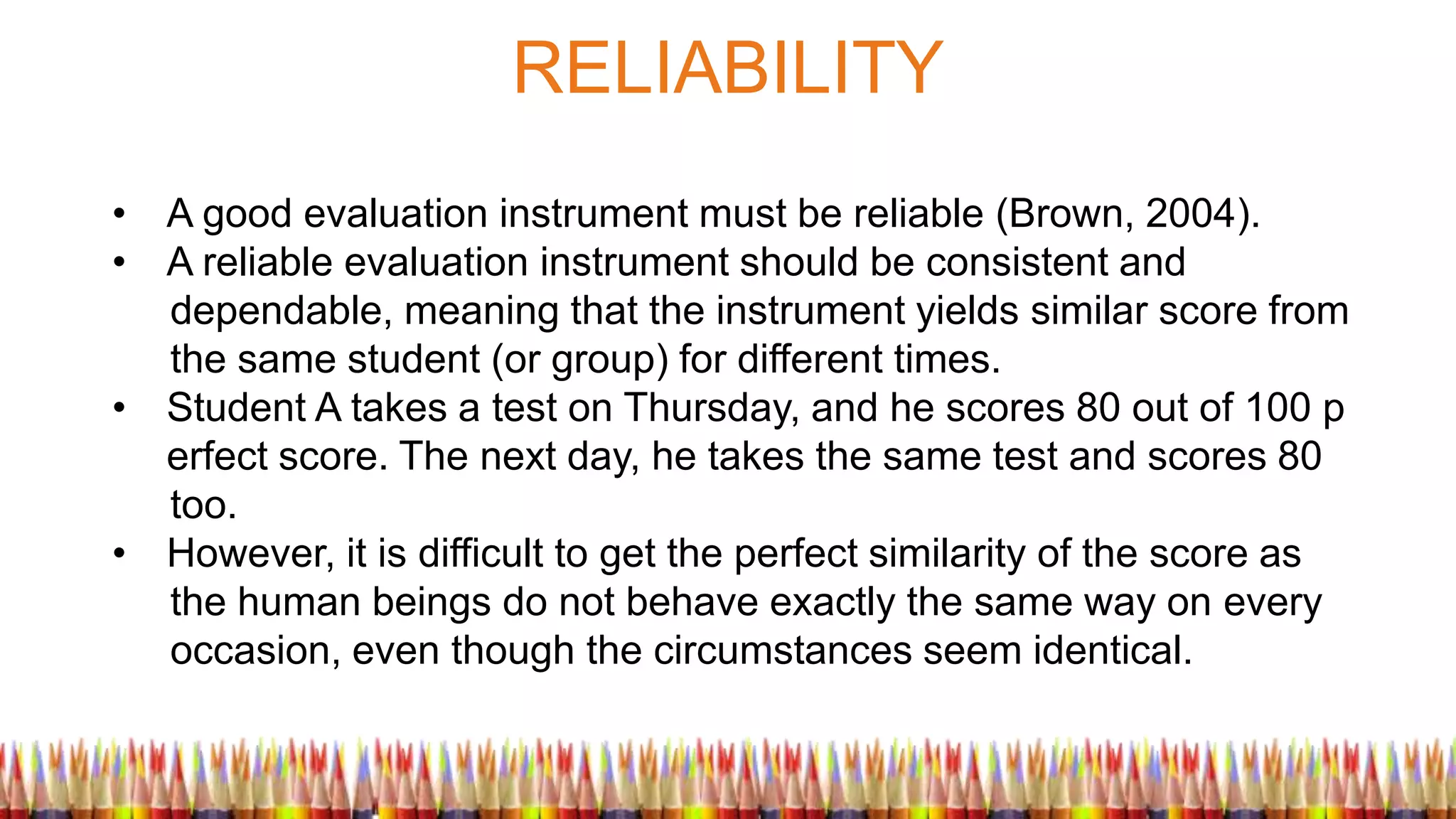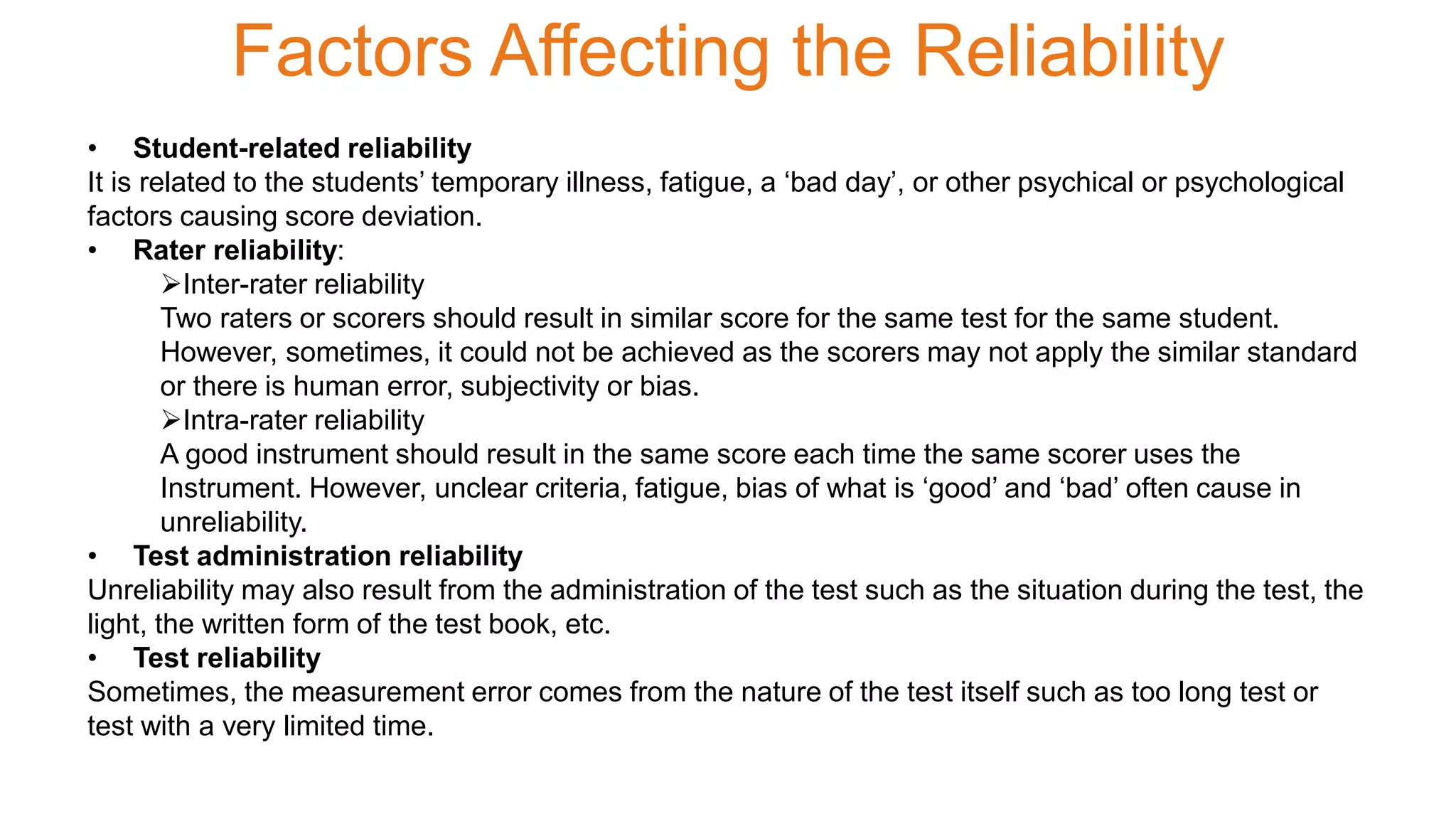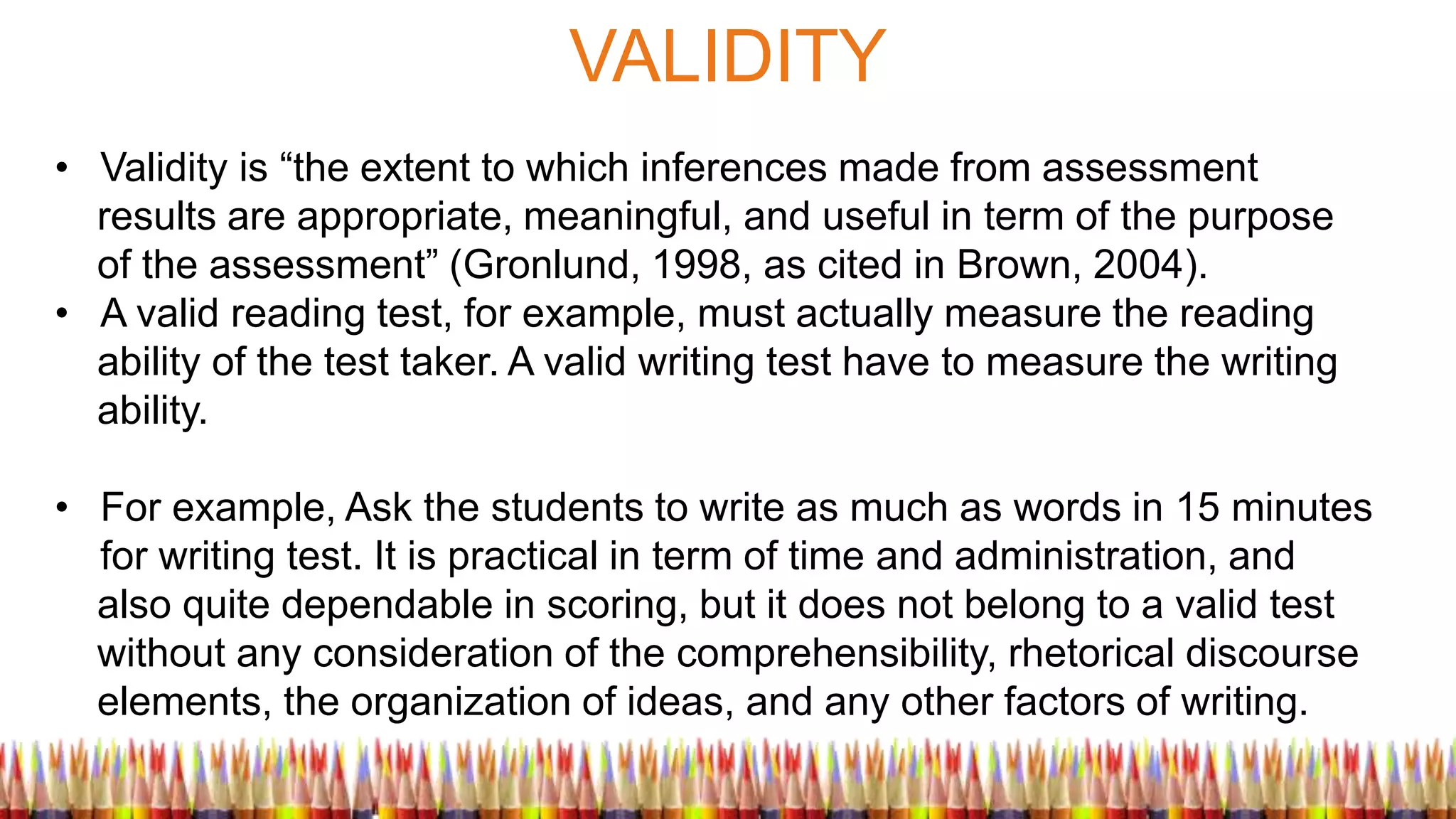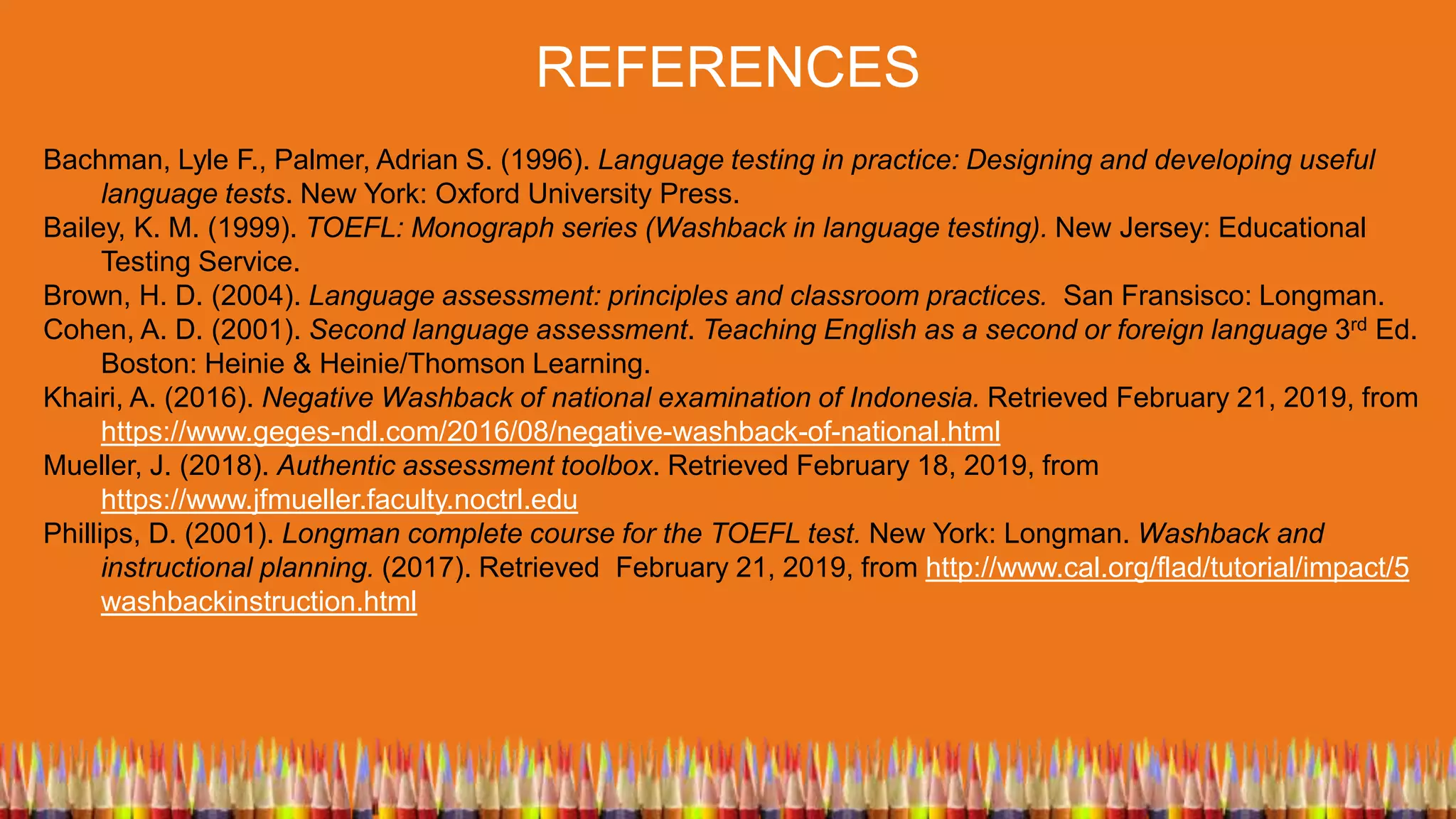This document discusses the key characteristics of a good assessment instrument: practicality, reliability, validity, authenticity, and washback. It provides details on each characteristic, including definitions, types, and factors that can affect them. For example, it explains that a reliable instrument should provide consistent scores over time and discusses sources of unreliability like student factors or test administration issues. The document also lists different types of validity like face validity and content validity. Overall, it serves as a comprehensive overview of the essential features an effective assessment should possess.
